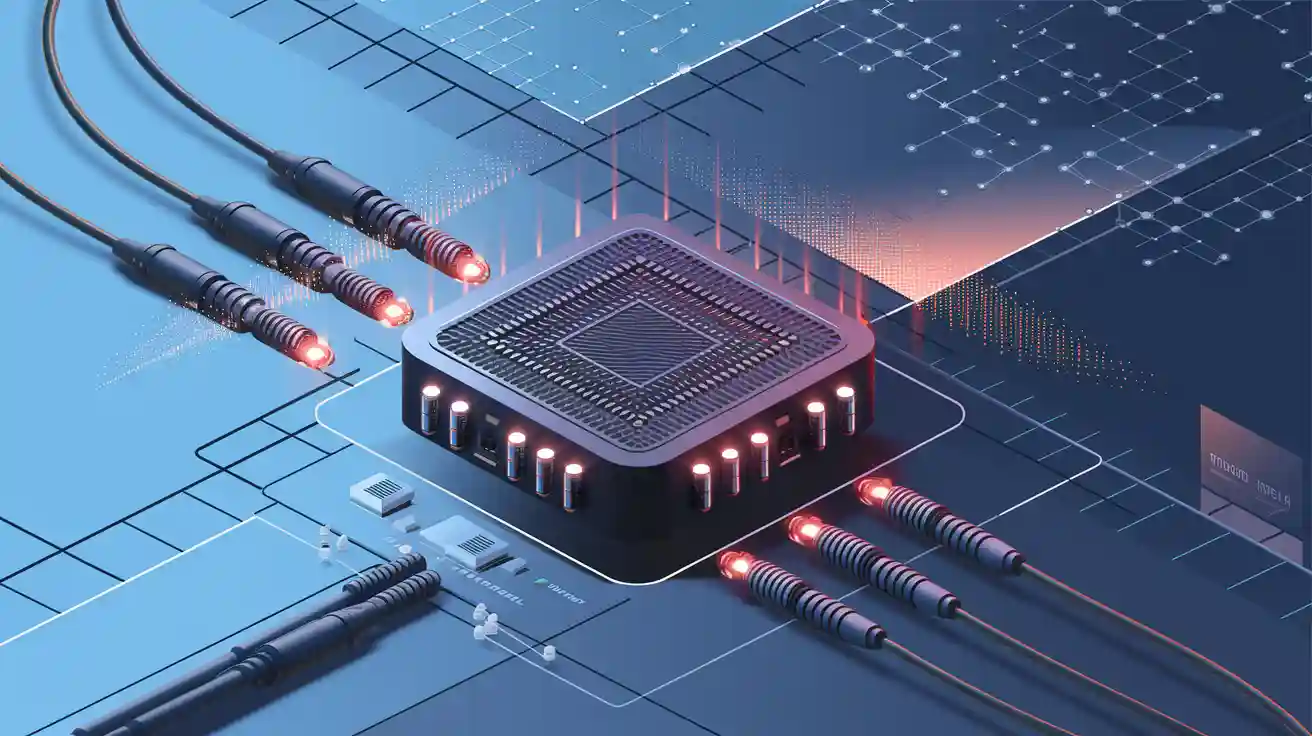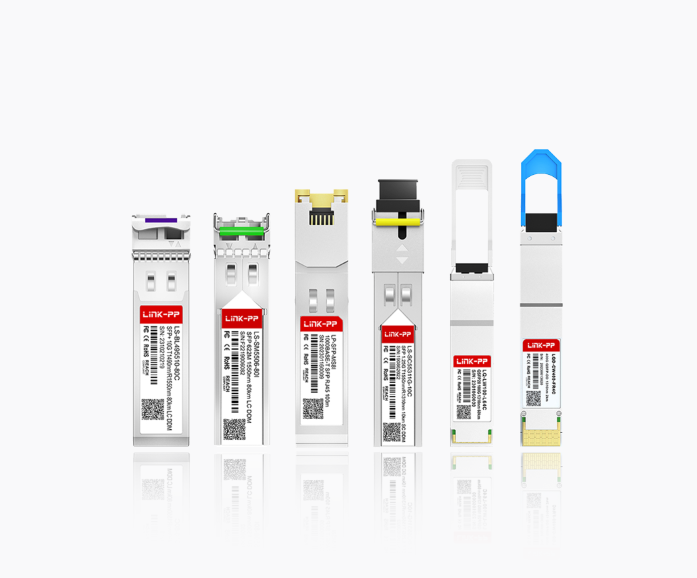
Industrial Grade 100G optical transceivers are essential components in modern networks, providing fast and reliable data transmission even in challenging environments. You can rely on their performance, as they offer exceptional metrics such as low Bit Error Rate (BER) and strong Signal-to-Noise Ratio (SNR). Each lane is capable of supporting data rates of up to 50Gb/s or 25Gb/s, with advanced configurations like PAM4 that effectively double throughput. Despite their impressive speeds, these Industrial-Grade 100G optical transceivers maintain energy efficiency, making them perfect for data centers that need to balance high performance with energy costs. Their durability and seamless compatibility with cutting-edge infrastructure guarantee robust connectivity across various industries.
Key Takeaways
Industrial 100G optical transceivers send data quickly and reliably. They are important for today’s networks.
These devices work well in tough conditions. They last long and don’t need to be replaced often.
They use less energy, which helps data centers save money but still work well.
They fit easily into current networks. Upgrades and expansions are simple and don’t cause big problems.
Industries like telecom and data centers use them a lot. They provide fast connections and manage big amounts of data.
Understanding Industrial 100G Optical Transceivers
What Defines an Industrial Grade Optical Transceiver?
Unlike their commercial counterparts designed for climate-controlled data centers, industrial grade optical modules are built to survive and thrive where conditions are harsh:
Extreme Temperature Tolerance: Operating reliably from -40°C to +85°C (and often beyond), crucial for outdoor enclosures, unheated facilities, or desert installations.
Enhanced Mechanical Robustness: Superior resistance to shock, vibration, and physical stress, vital for applications like transportation or heavy machinery.
Higher Immunity to EMI: Essential in electrically noisy industrial environments filled with motors, drives, and power systems.
Extended Lifespan & Reliability: Designed for longevity and consistent performance under constant stress, minimizing costly downtime. Components undergo rigorous screening and adhere to standards like Telcordia GR-468-CORE or IEC 60068-2.
Conformal Coating: Often applied to protect sensitive circuitry from humidity, dust, and corrosive elements.
Key Application Areas for 100G Industrial Optical Transceivers
5G/6G Mobile Network Fronthaul/Midhaul: Connecting Remote Radio Units (RRUs) to baseband units demands high bandwidth and unwavering reliability in rooftop, pole-mounted, or street cabinet locations exposed to temperature swings, moisture, and vibration. 100G industrial QSFP28 transceivers (like LR4, ER4 Lite, ZR4) are fundamental for XHaul networks.
Smart Grid & Utility Networks: Modern power grids rely on real-time monitoring, control, and protection systems spanning vast geographical areas – from substations to wind farms. Industrial grade optical transceivers ensure resilient communication for SCADA, Phasor Measurement Units (PMUs), and protection relay networks, even in remote, harsh substations or along transmission lines. LINK-PP's hardened transceivers are trusted in critical power infrastructure globally.
Industrial IoT (IIoT) & Factory Automation: As factories embrace Industry 4.0, massive data flows from sensors, cameras, robots, and control systems require robust, high-speed backbones. Industrial transceivers provide the reliable 100G links needed for backbone switches, machine vision systems, and real-time control networks on vibration-heavy factory floors.
Intelligent Transportation Systems (ITS): Traffic management centers, roadside units (RSUs), tunnel communications, and connected vehicle infrastructure operate in thermally challenging and vibration-prone environments. 100G industrial optical modules enable high-bandwidth video surveillance, tolling data, and V2X communication backbones.
Oil, Gas & Mining: Remote operations in extreme climates (arctic cold, desert heat) and hazardous locations require communication equipment that won't fail. Industrial transceivers provide reliable high-speed links for process control, video monitoring (security/safety), and data acquisition in refineries, pipelines, offshore platforms, and mines.
Defense & Aerospace: Ruggedized communication systems for field deployments, naval vessels, aircraft, and ground vehicles demand components meeting stringent MIL-STD specifications for temperature, shock, and vibration. Military-grade optical transceivers, often based on industrial designs, fulfill these roles.
Outdoor Wireless Backhaul: Providing high-capacity connectivity for point-to-point and point-to-multipoint microwave and millimeter-wave radios, often mounted on towers or rooftops exposed to the elements.

Comparing Industrial vs. Commercial 100G Transceivers: Key Specifications
Feature | Commercial Grade 100G Transceiver | Industrial Grade 100G Transceiver | Importance for Industrial Use |
|---|---|---|---|
Operating Temp Range | 0°C to +70°C (Case) | -40°C to +85°C (Case) | Essential for extreme climates, outdoor enclosures |
Storage Temp Range | -40°C to +85°C | -45°C to +90°C (or wider) | Ensures survival during non-operational extremes |
Humidity Tolerance | Standard (e.g., 85% non-condensing) | Enhanced (e.g., 95% non-condensing) | Critical for humid, damp, or coastal environments |
Shock Resistance | Moderate (e.g., 500G, 1ms) | High (e.g., 1000G, 1ms) | Vital for transportation, heavy machinery areas |
Vibration Resistance | Moderate (e.g., 5 Grms) | High (e.g., 15 Grms or more) | Essential for vehicles, factory floors, towers |
EMI/EMC Immunity | Standard Data Center Levels | Enhanced Shielding & Design | Crucial near motors, drives, high-power equipment |
Conformal Coating | Typically Not Applied | Often Applied | Protects against moisture, dust, corrosion |
Component Screening | Standard Commercial Grade | Extended Temp/Reliability Screening | Ensures long-term reliability under stress |
Typical Standards | IEEE, MSA (QSFP28) | IEEE, MSA, Telcordia GR-468-CORE, IEC 60068-2 | Defines ruggedness requirements |
Lifetime/MTBF | Standard (~1M hours at 40°C) | Extended (Higher MTBF @ Max Temp) | Reduces failure rates & maintenance costs |
Typical Applications | Data Center Racks/Switches | Cell Towers, Substations, Factories, Vehicles, Mines | Designed for harsh physical environments |
Choosing the Right 100G Industrial Optical Module
Selecting the optimal industrial QSFP28 transceiver requires careful consideration:
Form Factor & Interface: QSFP28 dominates 100G, but ensure compatibility with your switches/routers (e.g., Cisco, Juniper, Nokia compatibility). Common types: 100GBASE-LR4, ER4, ZR4, CWDM4, PSM4.
Reach Requirements: Match the module's reach (500m, 2km, 10km, 40km, 80km) to your specific link distance. Don't overpay for unnecessary reach.
Fiber Type: Single-Mode Fiber (SMF) is standard for most industrial 100G applications beyond very short distances.
Certified Ruggedness: Look for explicit compliance with industrial temperature standards (IEC 60068-2-1, -2, -14, -30) and reliability standards (Telcordia GR-468-CORE).
Supplier Reliability & Support: Choose established manufacturers like LINK-PP with a proven track record in industrial optical transceiver solutions, offering robust warranties and technical support.
Featured LINK-PP 100G Industrial Solutions: Engineered for Extreme Performance
To meet diverse industrial demands, LINK-PP offers a robust portfolio of 100G industrial optical transceivers. Below are key models trusted in critical infrastructure worldwide:
Popular LINK-PP 100G Industrial QSFP28 Modules
Model | Type | Reach | Wavelength | Temp Range | Key Applications |
|---|---|---|---|---|---|
100GBASE-LR4 | 10km | 1310nm LAN-WDM | -40°C to +85°C | 5G XHaul, Smart Grid Backbone | |
100G ER4 Lite | 40km | 1310nm LAN-WDM | -40°C to +85°C | Metro Networks, Utility SCADA | |
100GBASE-ZR4 | 80km | 1310nm LAN-WDM | -40°C to +85°C | Oil/Gas Pipelines, Remote Backhaul | |
CWDM4 | 2km | 1310nm CWDM4 | -40°C to +85°C | Factory Automation, IIoT Aggregation |
Why Choose LINK-PP Industrial Optical Transceivers?
Certified Ruggedness: All models exceed IEC 60068-2 (shock/vibration) and Telcordia GR-468-CORE (reliability) standards.
Seamless Compatibility: Pre-programmed for Cisco, Juniper, Nokia, and Huawei switches.
Advanced Diagnostics: Real-time DDM/DOM monitoring for voltage, temperature, and optical performance.
Extended Warranty: 5-year coverage with >2 million hours MTBF at maximum operating temperature.
Future Trends: Industrial Demands Driving Innovation
The need for hardened connectivity will only intensify:
Higher Speeds: Adoption of industrial 400G and 800G optical transceivers as industrial bandwidth demands soar.
Increased Power Efficiency: Lower power consumption remains critical, especially for remote, power-constrained sites.
Enhanced Diagnostics: Advanced Digital Diagnostics Monitoring (DDM/DOM) for predictive maintenance in hard-to-access locations.
Smaller Form Factors: Continued miniaturization (e.g., QSFP-DD, OSFP) enabling denser deployments in space-limited industrial enclosures.
Co-Packaged Optics (CPO): Potential future impact on switch design, demanding new ruggedization approaches.
Conclusion
Deploying the right industrial grade optical transceiver ensures uninterrupted operations in extreme conditions. LINK-PP’s hardened 100G solutions deliver unmatched resilience for 5G, smart grids, and Industry 4.0.
Ready to future-proof your industrial network?
✅ Explore LINK-PP’s 100G Industrial Series: contact now >>>
✅ Request a FREE Sample: Test our LQ-LW100-LR4I in your environment.
✅ Download Industrial Connectivity Guide: Design tips for harsh environments.
Need a custom solution?
Contact our engineers for application-specific industrial optical transceivers – from Arctic deployments to desert mining operations.
FAQ
What is the lifespan of industrial-grade 100G optical transceivers?
Industrial-grade 100G optical transceivers typically last 5 to 10 years, depending on usage and environmental conditions. Their robust design ensures durability in harsh environments, reducing the need for frequent replacements.
Can industrial-grade transceivers work in extreme temperatures?
Yes, these transceivers operate efficiently in extreme temperatures, ranging from -40°C to 85°C. This makes them ideal for outdoor installations and industrial applications where temperature fluctuations are common.
Are industrial-grade 100G transceivers compatible with older network equipment?
Most industrial-grade 100G transceivers follow industry standards like IEEE 802.3, ensuring compatibility with older network equipment. Always check the specifications to confirm seamless integration with your existing infrastructure.
How do these transceivers reduce energy consumption?
Industrial-grade transceivers use advanced technologies like silicon photonics and low-power designs. These features minimize energy consumption, making them cost-effective and environmentally friendly for large-scale deployments like data centers.
What industries benefit the most from industrial-grade 100G transceivers?
Industries like telecommunications, data centers, smart cities, and critical infrastructure benefit the most. These transceivers provide high-speed, reliable connectivity essential for handling large data volumes and ensuring uninterrupted operations.
See Also
The Importance of Digital Monitoring in Optical Transceivers




